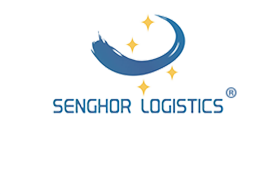Door-to-Door Sea Freight: How It Saves You Money Compared to Traditional Sea Freight
Traditional port-to-port shipping often involves multiple intermediaries, hidden fees, and logistical headaches. In contrast, door-to-door sea freight shipping services streamline the process and eliminate unnecessary expenses. Here’s how choosing door-to-door can save you time, money, and effort.
1. No separate domestic trucking costs
With traditional port-to-port shipping, you're responsible for arranging and paying for inland transportation—from the destination port to your warehouse or facility. This means coordinating with local transportation companies, negotiating rates, and managing scheduling delays. With door-to-door services, we, as a freight forwarder, handle the entire journey from the originating warehouse or supplier’s factory to the final destination. This eliminates the need to work with multiple logistics providers and reduces overall shipping costs.
2. Reducing port handling costs
With traditional shipping, once the goods arrive at the destination port, shippers of LCL cargo are responsible for costs like CFS and port storage fees. Door-to-Door services, however, typically incorporate these port handling costs into the overall quote, eliminating the additional high costs incurred by shippers due to unfamiliarity with the process or operational delays.
3. Avoidance of detention and demurrage charges
Delays at the destination port can lead to costly detention (container hold) and demurrage (port storage) fees. With traditional shipping, these charges often fall on the importer. Door-to-door services include proactive logistics management: we track your shipment, ensure timely pickup. This significantly reduces the risk of unexpected fees.
4. Customs clearance fees
Under traditional shipping methods, shippers must entrust a local customs clearance agent in the destination country to handle customs clearance. This can result in high customs clearance fees. Incorrect or incomplete customs clearance documents can also lead to return losses and further costs. With "door-to-door" services, the service provider is responsible for customs clearance at the destination port. Leveraging our professional team and extensive experience, we can complete customs clearance more efficiently and at a more manageable cost.
5. Reduced communication and coordination costs
With traditional sea freight, shippers or cargo owners must independently connect with multiple parties, including domestic transport fleets, customs brokers, and customs clearance agents in the destination country, resulting in high communication costs. With "door-to-door" services, a single service provider coordinates the entire process, reducing the number of interactions and communication costs for shippers, and, to some extent, saving them from the additional costs associated with poor communication.
6. Consolidated pricing
With traditional shipping, costs are often fragmented, while door-to-door services offer all-inclusive pricing. You get a clear, upfront quote that covers origin pickup, ocean transport, destination delivery, and customs clearance. This transparency helps you budget accurately and avoid surprise invoices.
(The above are based on countries and regions where door-to-door service is available.)
Imagine shipping a container from Shenzhen, China to Chicago, USA:
Traditional sea freight: You pay for sea freight rate to Los Angeles, then hire a trucker to move the container to Chicago (plus THC, demurrage risk, customs fees, etc.).
Door-to-Door: One fixed cost covers pickup in Shenzhen, ocean transport, customs clearance in L.A., and trucking to Chicago. No hidden fees.
Door-to-door sea shipping isn’t just a convenience—it’s a cost-saving strategy. By consolidating services, reducing intermediaries, and providing end-to-end oversight, we help you avoid the complexities of traditional freight. Whether you’re an importer or a growing business, choosing door-to-door means more predictable costs, fewer headaches, and a smoother logistics experience.
Of course, many customers also choose traditional to-port services. Generally, customers have a mature internal logistics team in the destination country or region; have signed long-term contracts with local trucking companies or warehousing service providers; have a large and stable freight volume; have long-term cooperative customs brokers, etc.
Not sure which model is right for your business? Contact us for comparative quotes. We'll analyze the costs of both D2D and P2P options to help you make the most informed and cost-effective decision for your supply chain.
Post time: Sep-19-2025














